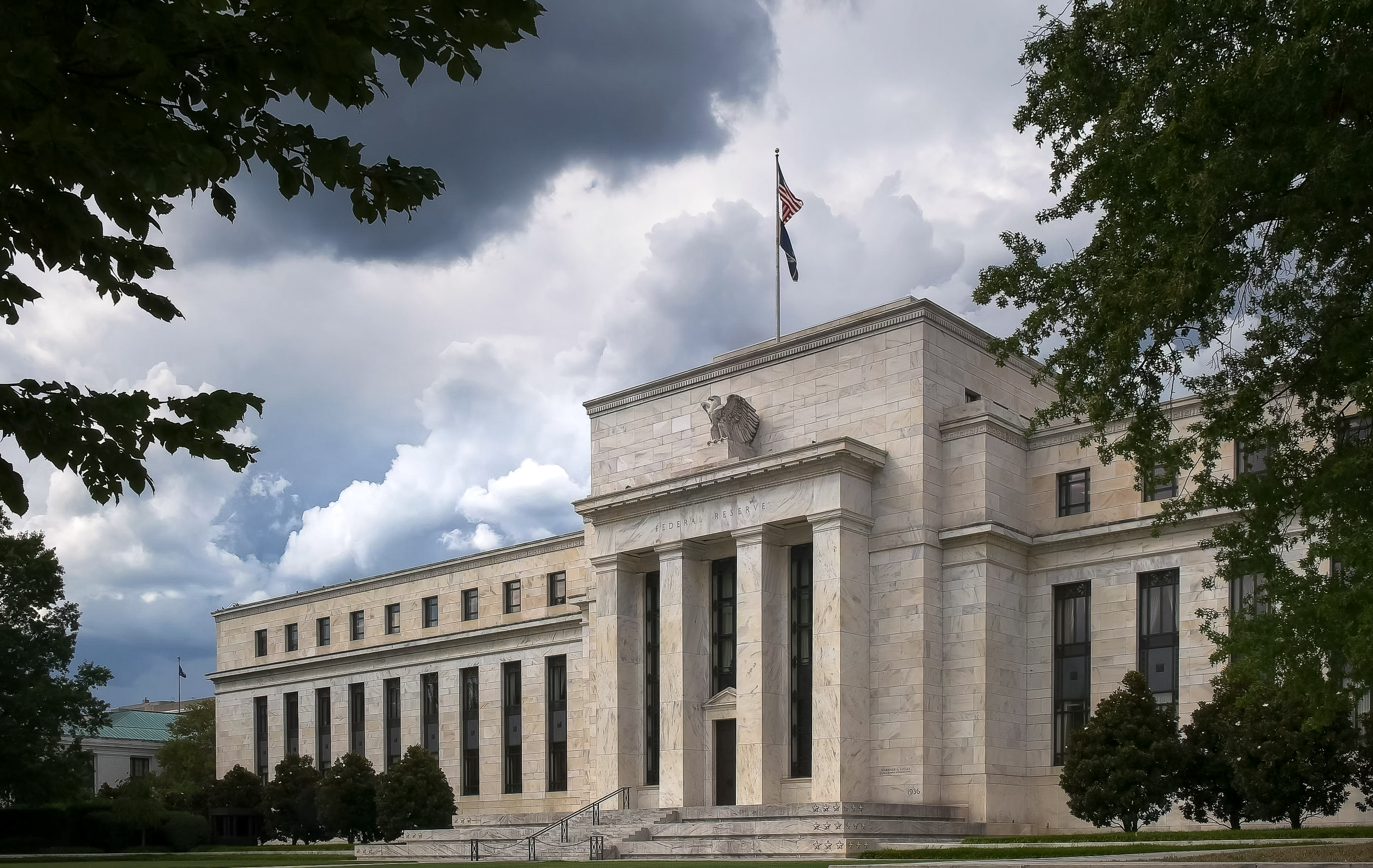How to Invest for a Fall Interest Rate Cut by the Fed
A lot can happen between now and then, but the probability the Fed cuts interest rates in September is back above 80%.


As was widely expected, the Federal Reserve didn't make any major moves at its July 29-30 meeting. Rate cuts are coming, but timing remains an open question.
Right after the Fed's most recent decision to hold the target range for the federal funds rate steady at 4.25% to 4.50%, which came the same day the Bureau of Economic Analysis reported better-than-expected second-quarter GDP growth, odds of rate cut in September dropped well below 50%.
As of July 30, the CME Group's FedWatch tool – which tracks the implied probability of Fed moves based on 30-day fed funds futures – showed a 41.3% chance the Fed will cut by 25 basis points, or 0.25%.

Sign up for Kiplinger’s Free E-Newsletters
Profit and prosper with the best of expert advice on investing, taxes, retirement, personal finance and more - straight to your e-mail.
Profit and prosper with the best of expert advice - straight to your e-mail.
But, following the July jobs report, the odds interest rates will be lower after the next Fed meeting jumped overnight from 37.7% to 80.8%.
Of course, a lot can happen between now and then, as recent incoming data and price action demonstrate. And there is no Fed meeting in August.
An unexpected uptick in inflation – perhaps tied to trade tensions or strong economic data – could cause Fed Chair Jerome Powell to drag his feet a bit.
Still, the target range for the fed funds rate is likely headed lower by the end of the year. So, what would lower interest rates mean for investors?
Let's break it down.
The Fed (usually) doesn't control long-term interest rates
The Fed's primary monetary policy tool is the federal funds rate – the interest rate at which commercial banks lend excess reserves to one another overnight.
When the Fed adjusts the target range for the fed funds rate, effects ripple across banks and through the economy.
The prime rate, which banks charge their most creditworthy customers, is closely tied to the fed funds rate. And most other loans – credit cards, small business loans, etc. – are priced as a spread above prime.
The Fed can also influence long-term interest rates by buying or selling longer-dated bonds, a strategy known as quantitative easing. But this is less common and generally reserved for emergency conditions, as in the 2008-09 Global Financial Crisis and again during COVID in 2020–21.
No significant bond-buying is expected this year.
What lower interest rates mean for bonds, savings accounts and other income investments
Lower short-term interest rates will likely lead to a steepening yield curve – short-term yields fall while long-term yields rise.
This typically happens because lower rates spur inflation expectations, pushing up long-term yields.
As a result, we can expect savings accounts, money market funds and Treasury bills to offer slightly lower yields.
And longer-term bonds, with maturities of 10 years to 30 years – may become marginally more attractive, potentially offering higher yields.
One important note: We probably won't see much of an effect on fixed-rate mortgages, as these tend to track longer-term interest rates.

How ETFs are doing during the second Trump administration
All else being equal, a more accommodative Fed is generally good for the stock market.
Lower interest rates stimulate economic growth, which boosts corporate earnings; reduce borrowing costs, which improves profit margins; and make stocks more attractive relative to fixed-income alternatives.
An investor might be content to sit in a money market fund yielding 5%. But if that yield drops to 3% or lower, they might be more inclined to take risk in the stock market in search of better returns.
As rates fall, money tends to flow into equities.
Which sectors benefit most from lower interest rates?
In a falling-interest-rate environment, growth stocks – particularly tech, small-caps and other companies dependent on expectations of future earnings – tend to benefit most. This happens for two reasons.
Capital is cheaper, and young, fast-growing companies often rely on external funding. Lower interest rates reduce their cost of capital.
And valuation math favors growth. Lower interest rates increase the present value of future profits, which boosts valuations for companies with long-term earnings potential.
Tech stocks and small-cap stocks as well as other high-growth sectors may get a tailwind when the Fed starts cutting interest rates again.
At the same time, interest rates aren't the only factor to consider when it comes to buying stocks.
The Fed typically cuts rates aggressively when economic conditions are weakening – and that can be bad for stocks overall.
Bottom line: Rate cuts are coming, eventually, and certain sectors may benefit. But stay diversified, manage your risk and don't blindly chase momentum.
Related content
Profit and prosper with the best of Kiplinger's advice on investing, taxes, retirement, personal finance and much more. Delivered daily. Enter your email in the box and click Sign Me Up.

Charles Lewis Sizemore, CFA is the Chief Investment Officer of Sizemore Capital Management LLC, a registered investment advisor based in Dallas, Texas, where he specializes in dividend-focused portfolios and in building alternative allocations with minimal correlation to the stock market.
-
 Ford Warns $3 Billion Tariff Bill Will Cut Profits and Pressure Prices in 2025
Ford Warns $3 Billion Tariff Bill Will Cut Profits and Pressure Prices in 2025Ford now expects a $3 billion tariff hit this year — pushing up costs on parts, altering vehicle pricing and narrowing dealer discounts even as sales stay strong.
-
 What Trump's EU Trade Deal Means for Your Wallet
What Trump's EU Trade Deal Means for Your WalletTrump's trade deal with the EU averted the worst case scenario, but US consumers might still see price hikes on some key goods.
-
 July Jobs Report Renews Rate-Cut Hopes: What the Experts Are Saying
July Jobs Report Renews Rate-Cut Hopes: What the Experts Are SayingThe July jobs report shows weakening in the labor market and lifts expectations for a September rate cut.
-
 Should You Buy These ETFs Before the Fed Cuts Rates?
Should You Buy These ETFs Before the Fed Cuts Rates?The Fed is likely to lower interest rates this fall, and tactical investors may want to look closer at these ETFs before rate cuts resume.
-
 How Much Income Will an Indexed Annuity Get You? An Annuities Expert Lays Out the Numbers
How Much Income Will an Indexed Annuity Get You? An Annuities Expert Lays Out the NumbersGuaranteed lifetime income sounds great, but how much will it be? Several factors determine your future payout on indexed annuities with an income rider.
-
 Financial Fact vs Fiction: Why Inflation Is Lower, But Prices Are Not
Financial Fact vs Fiction: Why Inflation Is Lower, But Prices Are NotDo you think bonds protect you from stock losses? Are you confident your assets will go to your intended heirs if all you have is a will? Think again — and read on for other myths that could be leading you astray.
-
 I'm a Personal Finance Expert: Here's the Truth About Using AI to Plan Your Retirement
I'm a Personal Finance Expert: Here's the Truth About Using AI to Plan Your RetirementAI can be a useful tool, but it often gets important financial information wrong. It also can't emulate the empathy, judgment and personal connection you can get with a human being.
-
 Stocks Can't Hold Meta, Microsoft Gains: Stock Market Today
Stocks Can't Hold Meta, Microsoft Gains: Stock Market TodayThe main indexes all opened higher Thursday on impressive Big Tech earnings, but momentum faded into the close.
-
 Three Ways to Find Deals in Your Investments This Year
Three Ways to Find Deals in Your Investments This YearLooking for ways to save because of tariffs? Don't forget to look for deals in your investments. Here are three expert tips for making a little extra this year.
-
 You Don't Have to Be Wealthy to Need a Wealth Manager
You Don't Have to Be Wealthy to Need a Wealth ManagerNavigating complex financial decisions is hard on your own, no matter how much money you have. A wealth manager can provide comprehensive financial planning, investment management, risk management and more.